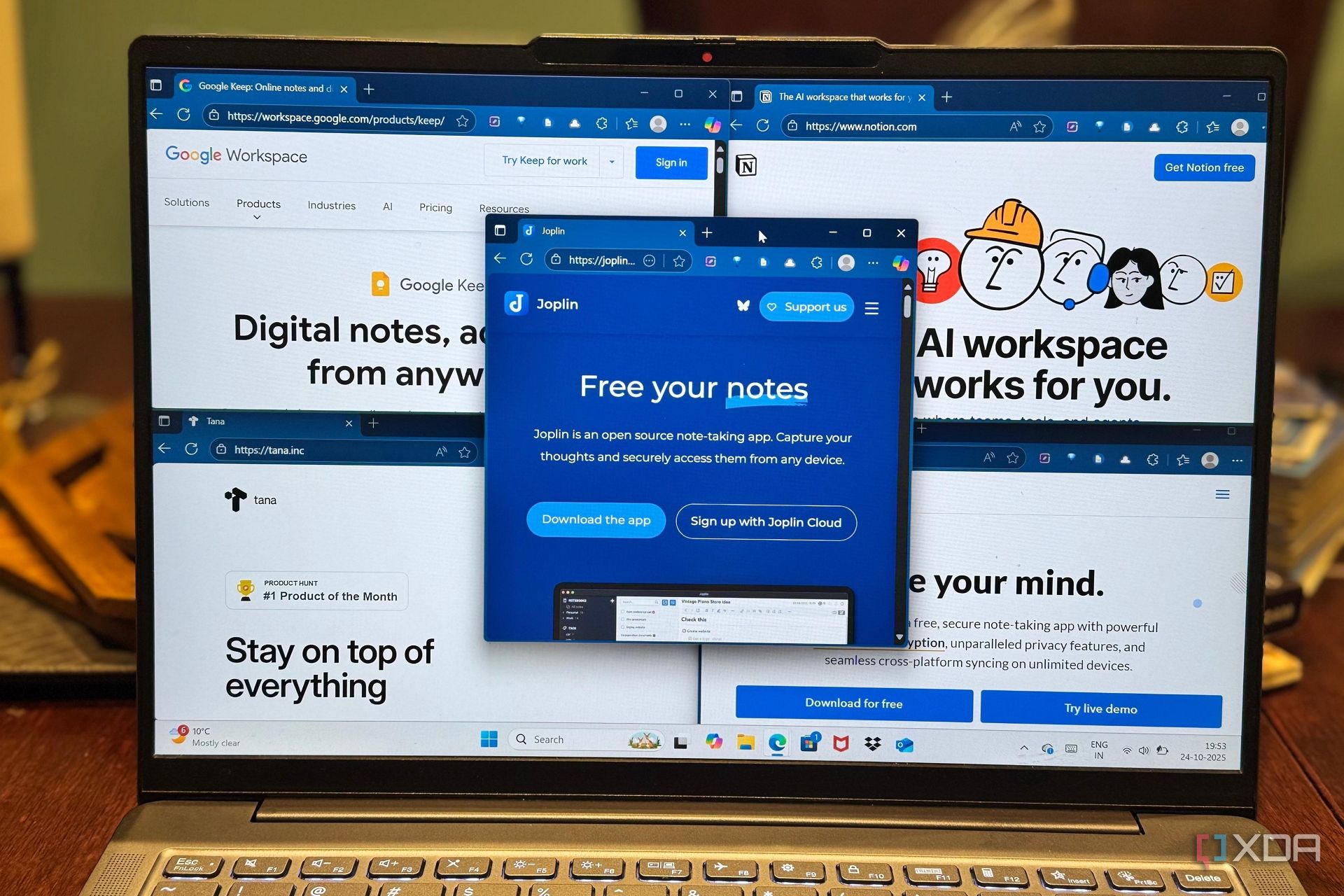Many users have found themselves overwhelmed by the features and organizational structure of Microsoft’s OneNote. While it promises flexibility, many report that its freeform canvas often leads to chaos rather than clarity. This has prompted a growing interest in alternative note-taking tools that offer improved organization, cross-platform capabilities, and user control over data.
As productivity tools evolve, five noteworthy alternatives to OneNote have emerged, each designed to enhance how users capture, organize, and retrieve information. These tools not only address OneNote’s shortcomings but also provide unique features that cater to different needs.
Joplin: The Open-Source Solution
Joplin stands out as a compelling alternative that delivers the essential features OneNote promises but fails to execute effectively. This open-source application allows users to create notebooks and organize notes without the constraints of vendor lock-in. Notes are stored as plain Markdown files, enabling users to sync their data through various services, including Dropbox, OneDrive, and Nextcloud.
One of Joplin’s main advantages is its robust organizational structure. Users can create sub-notebooks and utilize an effective tagging system to enhance searchability. The search function indexes content reliably, making it easy to locate past notes without sifting through multiple layers. Additionally, Joplin’s cross-device synchronization is dependable, allowing changes to reflect seamlessly across desktop, mobile, and web platforms.
End-to-end encryption further ensures that user data remains secure during synchronization, a feature that is increasingly important in today’s digital landscape.
Notion: Structured Databases for Enhanced Workflow
Notion takes a different approach by replacing the uncertainty of note placement with structured databases tailored to various types of information. Its adaptable framework enables users to create dedicated databases for meetings, projects, and resources, allowing for consistent organization across different views—calendar, kanban, table, or gallery.
Notion’s strong collaboration features make it suitable for team environments, offering real-time editing, comments, and permissions. Though it uses a proprietary format, it compensates with extensive export options and an API for custom tool development. While the learning curve may be steeper than OneNote’s straightforward interface, the benefits of a systematic approach result in better information retrieval and management.
Tana: Dynamic Outlining for Complex Knowledge Management
For users seeking a different paradigm, Tana operates on an outline-based model that allows for dynamic querying of information. Unlike OneNote’s page-centric design, Tana enables users to create nodes that can hold properties and relationships, fostering a more organized method of information retrieval.
The concept of “supertags” enhances Tana’s functionality, allowing users to attach specific properties to notes. This feature makes it easy to query information based on criteria like attendees at meetings or action items from specific projects. Although Tana’s structure may initially seem limiting, it encourages clearer organization and efficient information retrieval.
Standard Notes: Minimalism Meets Security
Standard Notes appeals to those who prefer a minimalist approach, focusing on the core aspects of note-taking: writing and retrieving notes. Its simple interface eliminates the feature bloat associated with other applications, providing a seamless experience that emphasizes security through default end-to-end encryption.
This tool is particularly effective for managing sensitive information, as it ensures that only the user can decrypt their data. The nested tagging system offers sufficient organization without overwhelming users with complex hierarchies. While Standard Notes may not compete with Notion for complex databases, it excels in straightforward note-taking and privacy.
Google Keep: Speedy and Simple
Finally, Google Keep exemplifies the philosophy that sometimes less is more. Designed for quick capturing and retrieval of information, it avoids the complications of nested sections and complex features. The fast search function allows users to find notes almost instantly, enhancing productivity.
With a visually appealing color coding and labeling system, Google Keep enables users to categorize thoughts efficiently. Its integration with Google Workspace facilitates collaborative efforts, ensuring that shared notes and lists function smoothly. While it may not serve as a full-fledged knowledge management system, it excels in its specific use case of quick information capture.
Transitioning from OneNote to a more suitable tool doesn’t have to be daunting. Users can start fresh with their chosen alternative while retaining OneNote as a read-only archive. Over time, this approach helps eliminate unnecessary digital clutter, allowing individuals to focus on valuable notes and ideas.
In summary, the shift towards more tailored productivity tools reflects an evolving understanding of how users interact with information. Whether opting for Joplin’s open-source flexibility, Notion’s structured databases, Tana’s dynamic outlining, Standard Notes’ security, or Google Keep’s simplicity, individuals can significantly enhance their note-taking and organizational skills. Each of these alternatives addresses OneNote’s limitations, offering improved functionality and user control over data.
